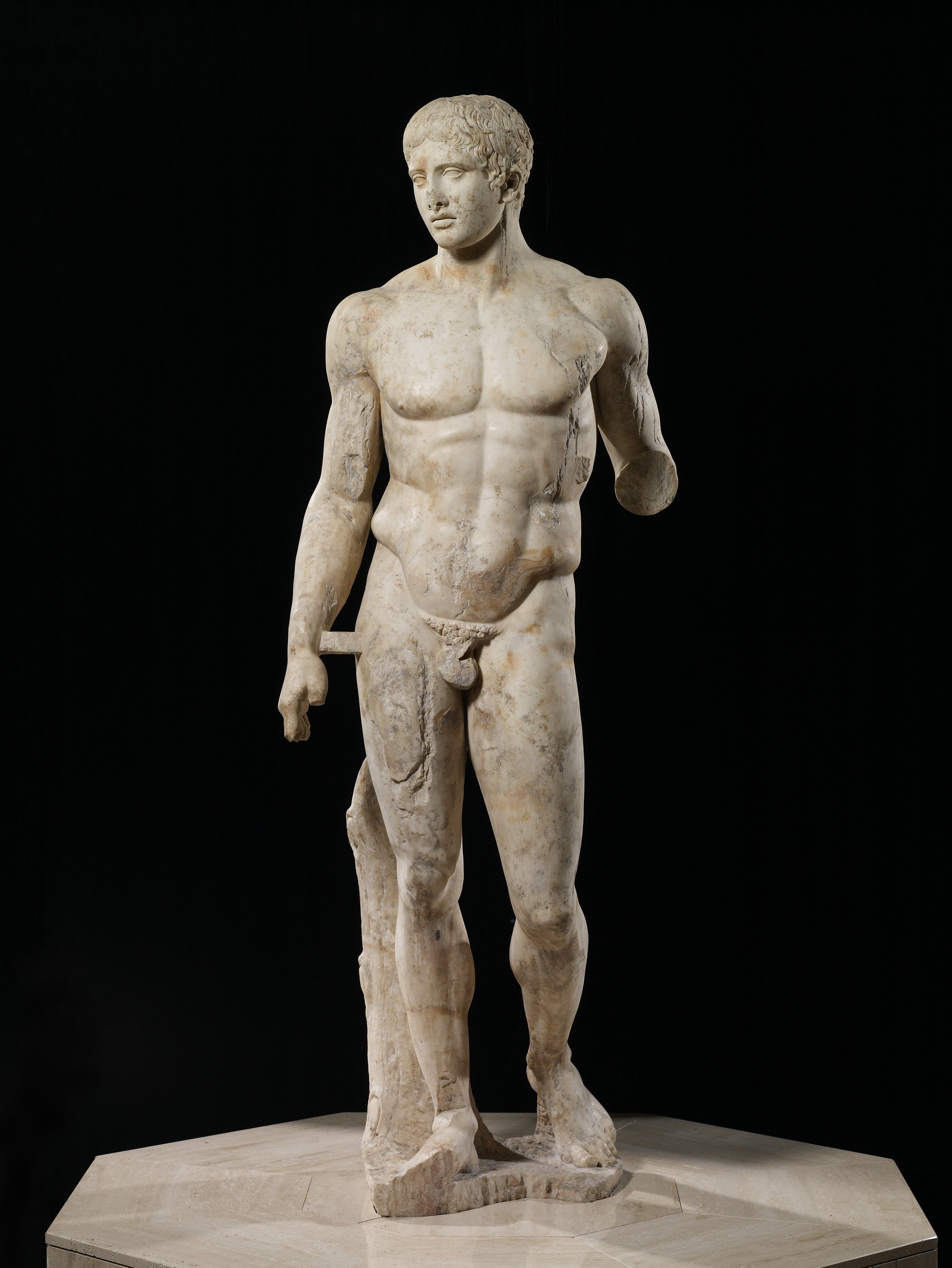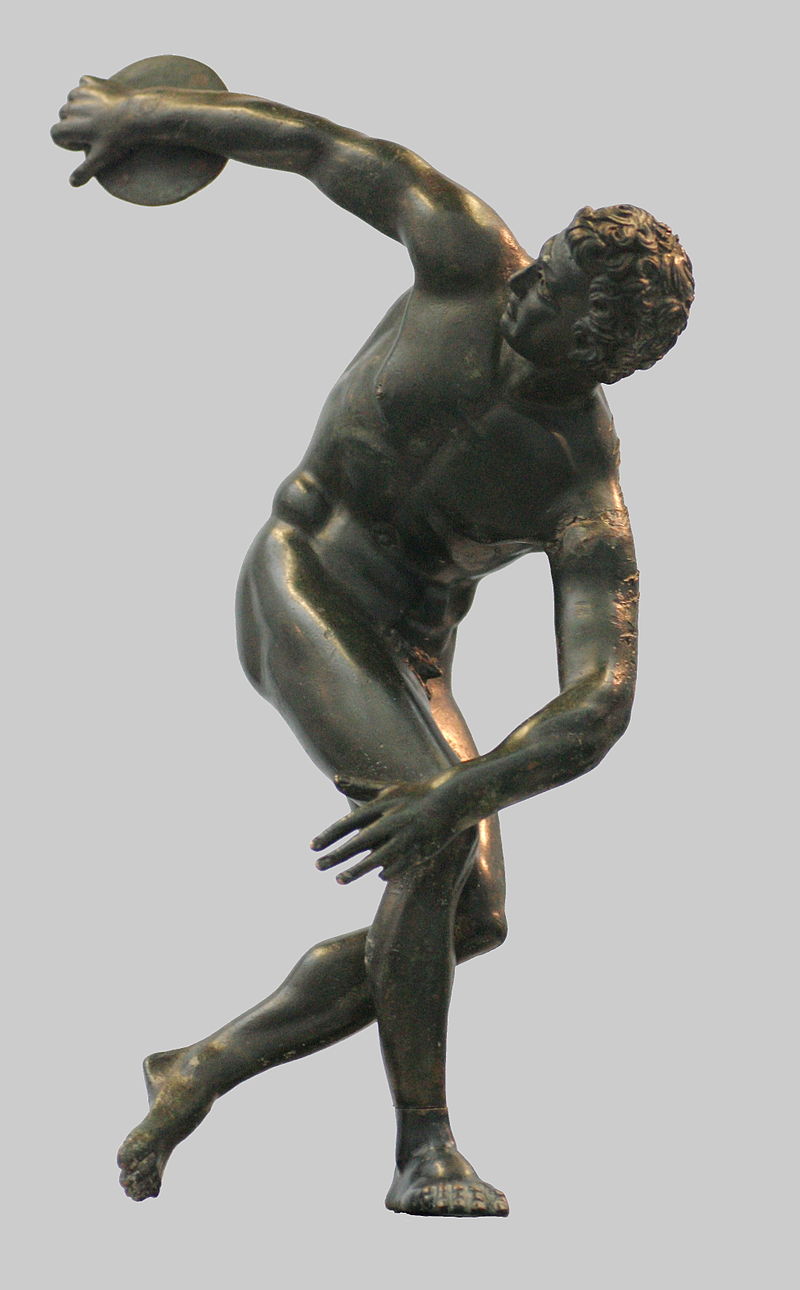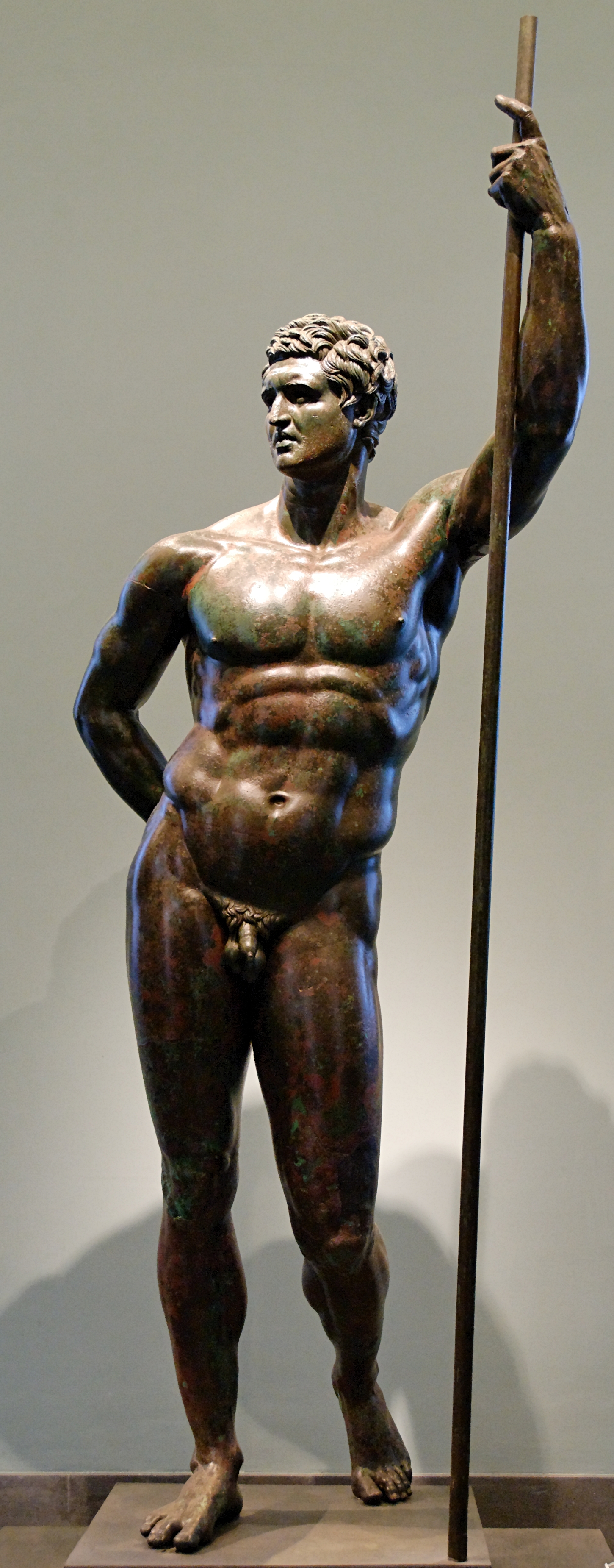What is the difference between the Classical and the Hellenistic?
Statues from Classical and the Hellenistic periods are often confused as belonging to the same culture and time. However, Hellenistic art came after Alexander had conquered the known world. Though similar in subject, the art itself is often fundamentally different. The gist of this difference arises from the fact that the very structure of the political world in Greece had changed fundamentally: the Classical Polis had been replaced by the Hellenistic Kingdom. In this new world, the individual as personified by Alexander became superior to the citizen. The concept of an integrated polis where each did their part fell away to a much more self serving ideal. This needed a new art form and new artistic canons: thusly the Hellenistic form was born.
This is discussed in Stewarts Art, Desire and the Body in Ancient Greece. During a discussion of statues and depictions of Alexander, he states that:
"If the Doryphoros was Measure personified, the very epitome of sophrosyne [temperance], and defferal to the public eye, then Alexander represented the extreme. His domineering pose, power-hungry glance, and collosal achievement rode roughshod over any moderating gaze and set a standard for all his successors to live up to. As an inscription on one of Lysippos' bronzes read:This statue seems to look at Zeus and say:
"Keep thou Olympos; me let earth obey!""
This new idea of art moved away from the idealized male (exemplified in Doryphoros and Discobolus) and towards a more personalized, more self congratulatory and often more bizarre bent. Rather than display idealized males, Hellenistic art tends to portray men in the particular - the boxer at rest, for instance, who has a cauliflower ear and cuts and scars on his body. This is not an ideal man: rather, this is a particular boxer, cauliflower ear and all. In some senses, this is a positive thing, as we begin to see the first portraits and the first sculptures of the non ideal, but many art scholars view this period as narcissistic and less "artistic". As Ian Stewart writes (specifically in reference to the Hellenistic Prince, pictured above):
In these [Hellenistic] works, the human frame has all but reached the limits of its development. Torsos and limbs are massive, bones are gigantic, muscles bulge with phallic energy, and skin is iron-hard. Furthermore, all liberally quote the masterpieces of the past as if by expropriating their bodies and their impeccably classical pedigrees for their own ends. So just as Doryphoros can be read as a microcosm of the ideal polis, these bodies with their exponential increase in size, strength, and implied phallic potency metaphorize the strident hellenism, hugely increased power, and thrusting ambition of the institution that had subsumed it: the hellenistic kingdom.return



